ASIA
Afghanistan seeks foreign investment for economy self-sufficiency
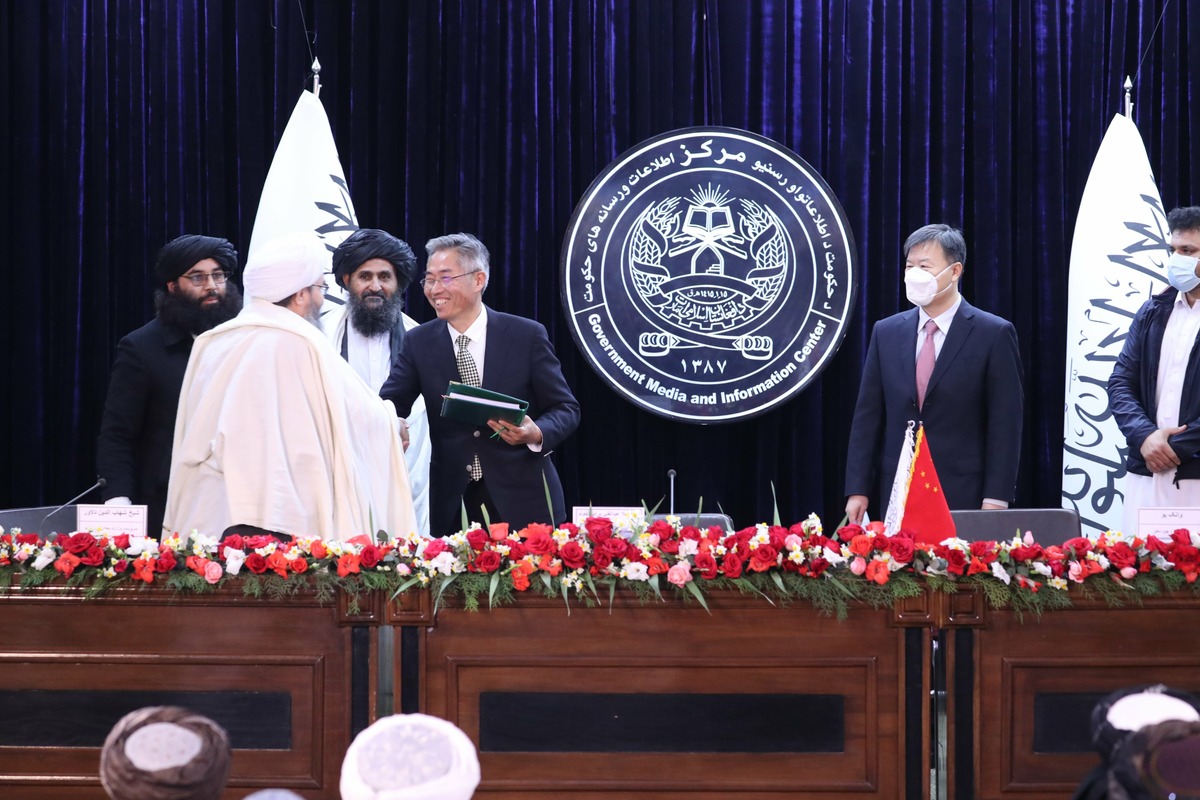
From day one, the Taliban were pining high hopes on China, Russia, and Iran to invest in Afghanistan in different fields. Taliban seized power in August 2021 and the leadership had repeatedly said they want to have good ties with the world, especially with the neighbors and regional countries. The Taliban is also willing to have more contribution from Pakistan but the country itself is marred with so many economic difficulties.
Afghanistan under the Taliban is indeed suffering from immense economic trouble. Poverty has reached its peak with almost zero-jot opportunities. Over half of the estimated 35 million populations are living below the poverty line.
The US also froze some $9 billion in Afghan assets as what Washington describes to save the money from the hand of Taliban. But, on a monthly basis, the Taliban administration has been receiving some $10 million on a weekly basis, making it $40 million in a month. However, some unconfirmed reports say that this money has not been transformed to the Taliban in the past three weeks. Meanwhile, the Taliban has been looking for alternative and other business models to help improve its fragile economy.
Oil extrication agreement
The Taliban has signed a contract with China’s CAPEIC (Xinjiang Central Asia Oil and Gas Company) to extract oil from northern Afghanistan’s Amu Darya basin. This agreement is an apparent attempt to bolster Afghanistan’s increasingly impoverished and isolated economy. The agreement with CAPEIC is the first major international energy extraction deal the Taliban has signed since taking control of the country in 2021.
The contract was signed in the capital Kabul in the presence of Taliban’s Deputy Prime Minister for Economic Affairs Mullah Abdul Ghani Baradar and the Chinese ambassador to Afghanistan, Wang Yu.
Speaking in the signing ceremony, Baradar said several projects were approved by the Economic Commission, and with their undertaking, fundamental steps will be taken assuming the prosperity of the country and public welfare.
Calling the oil extraction contract as a crucial step towards the country reaching self-sufficiency, he called on the Chinese company to work in accordance with international standards and to provide local people with public benefits.
Amu Darya basin is located in Sar-e-Pul province, and Baradar seemed happy that the project will provide jobs to the people to improve their economic situation.
Taliban’s Minister of Mines and Petroleum, Sheikh Shahabuddin Delawar said oil will be extracted from an area covering 4,500 square kilometers across parts of Sar-e-Pul, Jawzjan and Faryab provinces.
“At least 3,000 people would get work opportunities once the extraction work starts,” according to a statement by the Taliban. It said that 200 tons of oil would be extracted initially in a day and the quantity would increase to 1,000 tons a day gradually.
$150 million investment for initial period
Indeed, such an agreement will boost the economic situation and a good step toward further improving relations between Kabul and Beijing. “This contract is important for the economic growth and self-sufficiency of Afghanistan,” China’s Ambassador to Afghanistan, Wang Yu said as he sees the agreement as a good illustration of alliance and interaction between the two countries.
Taliban spokesman, Zabihullah Mujahid said that the Chinese company will invest $150 million a year in Afghanistan under the contract, and its investment would increase to $540 million in three years. The contract period is for the 25-year.
As per the estimates, the Amu Darya basin holds over 80 million barrels of crude oil and in 2012, China’s state-owned company National Petroleum Corp (CNPC) signed a contract with Afghanistan’s previous government to extract oil from the basin.
The fresh contract came at a time when Afghanistan is in desperate need to boost its economy as international funding has remained largely frozen since the Taliban returned to power.
China opens for investment despite security threat
Already facing a lack of formal recognition and sanctions hampering the country’s banking sector, investors are faced with growing security concerns, especially after the Islamic State (IS) aka Daesh terrorist group attacked on foreign targets in Kabul.
This month, three unidentified armed men opened fire inside the multi-storey Kabul Longan Hotel, a residency popular with Chinese nationals, in central Kabul, wounding five Chinese. Taliban forces gunned down all the three attackers.
“We are happy that China did not stop investment after the hotel attack,” said an official at the Interior Ministry. Speaking to Harici, the official said that there was fear that the attack could prompt some re-thinking among the Chinese investors. “We are happy to see that China signed the agreement and we are ready to work day and night to maintain security for such investments,” he said, wishing anonymity.
Taliban’s Acting Commerce Minister, Haji Nooruddin Azizi had recently said that they will support any project which can help Afghanistan to reach self-sufficiency.
“We will start a national self-sufficiency program, we will encourage all government administrations to use domestic products, and we will also try to encourage people through mosques to support our domestic products,” Azizi said in an interview with Reuters. “
Referring to the hotel attack, Azizi said that they take every step to protect the businessmen from any harm. “The attack hasn’t had any bad impact, but if it happened constantly, yes it might have a bad impact,” he said, referring to the investment environment.
Azizi furthered that countries including Iran, Russia and China were interested in trade and investment in Afghanistan, adding that some of the projects under discussion were Chinese industrial parks and thermal power plants, with involvement from Russia and Iran.
ASIA
Xi urges global CEOs to safeguard trade and supply chains

Chinese President Xi Jinping, in a meeting with a group of executives including Rajesh Subramaniam from FedEx and Bill Winters from Standard Chartered, called on global business leaders to work together to protect supply chains.
Amid a deepening trade war with the US, the Chinese leader told the group of foreign business leaders, including Pascal Soriot from AstraZeneca and Miguel Ángel López Borrego from Thyssenkrupp, that they should resist behaviors that “turn back” history.
Speaking at the meeting held in Beijing on Friday, Xi said, “We hope everyone will have a broad and long-term perspective and not blindly follow actions that disrupt the security and stability of global industrial and supply chains, but instead add more positive energy and certainty to global development.”
The event at the Great Hall of the People marked the second consecutive year that Xi held a carefully arranged meeting with foreign CEOs in the Chinese capital. Last year’s event involved only US business leaders.
The meeting took place at the end of a busy week for Chinese policymakers, who are striving to strengthen relations with the international business community amid rising tensions with the administration of US President Donald Trump.
China’s leading annual CEO conference, the China Development Forum, was held earlier this week in Beijing, followed by the Boao Forum for Asia on the tropical resort island of Hainan.
Beijing is trying to present itself as a bastion of stability in global trade, in contrast to the US, where Trump has launched successive waves of tariffs on many products, from aluminum to automobiles.
Trump pledged on April 2 to impose broad and reciprocal taxes on US trade partners.
ASIA
Trump’s potential auto tariffs worry Japan and South Korea

Following US President Donald Trump’s announcement that he would impose a 25% tariff on imported cars and auto parts, Japan’s Prime Minister sounded the alarm on Thursday.
Prime Minister Shigeru Ishiba told lawmakers during a parliamentary session, “We need to consider appropriate responses,” adding, “All options will be on the table.”
This move, seen as undermining a bilateral agreement made between Trump and then-Prime Minister Shinzo Abe in September 2019, came as a surprise to Japan. This limited trade deal had opened Japan’s market to more American agricultural products. The agreement states that the two countries “will refrain from taking measures contrary to the spirit of these agreements.”
Japanese automakers reacted cautiously to the announcement. Toyota, Subaru, Mazda, and Honda issued brief statements saying they were assessing the potential impact.
Imported cars and trucks are currently subject to tariffs of 2.5% and 25%, respectively. When the new tariffs take effect on April 3, these rates will rise to 27.5% and 50%. The 25% tariff will also apply to automotive parts like engines and transmissions, taking effect no later than May 3.
Japan’s Chief Cabinet Secretary Yoshimasa Hayashi said the government intends to negotiate exemptions. Economists say it is unclear how exemptions might be secured, but there are several options.
According to economists, options Japan might consider include voluntary export restraints, a commitment to increase imports of items like natural gas, grain, and meat, and replacing Russian natural gas with gas from the US. In 2023, 8.9% of Japan’s natural gas imports came from Russia, while 7.2% came from the US.
“Japan will likely be looking at all these options,” said Koichi Fujishiro, a senior economist at the Dai-ichi Life Research Institute.
South Korea in a similar situation
South Korea is also expected to seek exemptions. Analysts said that South Korean automaker Hyundai Motor Group’s announcement earlier this week of a $21 billion US investment would help its negotiating position.
Esther Yim, a senior analyst at Samsung Securities, said, “The US has, in principle, applied a 25% tariff on all imported cars,” adding, “Washington can then negotiate with each country, and I think investment can be used as leverage.”
South Korea’s Ministry of Industry pledged an emergency response by April to help the country’s automakers, who are expected to face “significant challenges” when the tariffs take effect.
Over the years, global automakers have shifted to local production to avoid trade friction. According to the Mitsubishi Research Institute, 60% of Japanese cars sold in the US are produced in the US. This figure drops to 40% for Korean cars. For European brands, the rate is as high as 70%.
Although Ishiba insists all options are on the table, few analysts expect Japan to resort to retaliatory measures, at least at this point. “Japan would gain very little by retaliating against US tariffs,” Fujishiro said.
At a summit with Trump in February, Ishiba pointed out that Japan is the largest investor in the US and a significant job creator, promising to work towards increasing Japan’s investment balance from $783.3 billion in 2023 to $1 trillion.
Cars, Japan’s largest export item to the US, are worth 6 trillion yen ($40 billion) and will account for 28% of Japan’s total exports in 2024. This amount is equivalent to 1% of Japan’s nominal gross domestic product.
Takahide Kiuchi from the Nomura Research Institute estimates that a 25% tariff would reduce Japan’s car exports to the US by 15% to 20% and lower Japan’s GDP by 0.2%.
If Japanese automakers try to respond by shifting production to the US, this would reduce domestic employment and hollow out the country’s economy in the long run.
Masanori Katayama, chairman of the Japan Automobile Manufacturers Association, said at a press conference last week, “Car exports from Japan are necessary to supplement the domestic production of Japanese automakers and to provide a lineup of attractive cars… to meet the diverse needs of American customers through car dealerships in every US state.”
Katayama said that when the US implements the tariff, “a significant production adjustment is expected. The Japanese auto industry consists not only of automakers but also parts suppliers and employs 5.5 million people.”
Katayama insisted that the industry and the Japanese government must come together to take action and keep domestic supply chains intact.
The tariffs are also expected to harm American automakers because they too source parts and manufacture globally to keep costs down and make their cars competitive in the market.
Nomura analyst Anindya Das said General Motors could fall into an operating loss on an annual basis due to its reliance on factories in Mexico. He added that Toyota could also see a 30% drop in operating profit.
Jennifer Safavian, president and CEO of Autos Drive America, an industry group representing international automakers operating in the US, including Toyota, Honda, Nissan, and others, said, “Tariffs imposed today will make it more expensive to produce and sell cars in the US, ultimately leading to higher prices, fewer choices for consumers, and fewer manufacturing jobs in the US.”
ASIA
South Korean opposition leader Lee Jae-myung acquitted in election law case
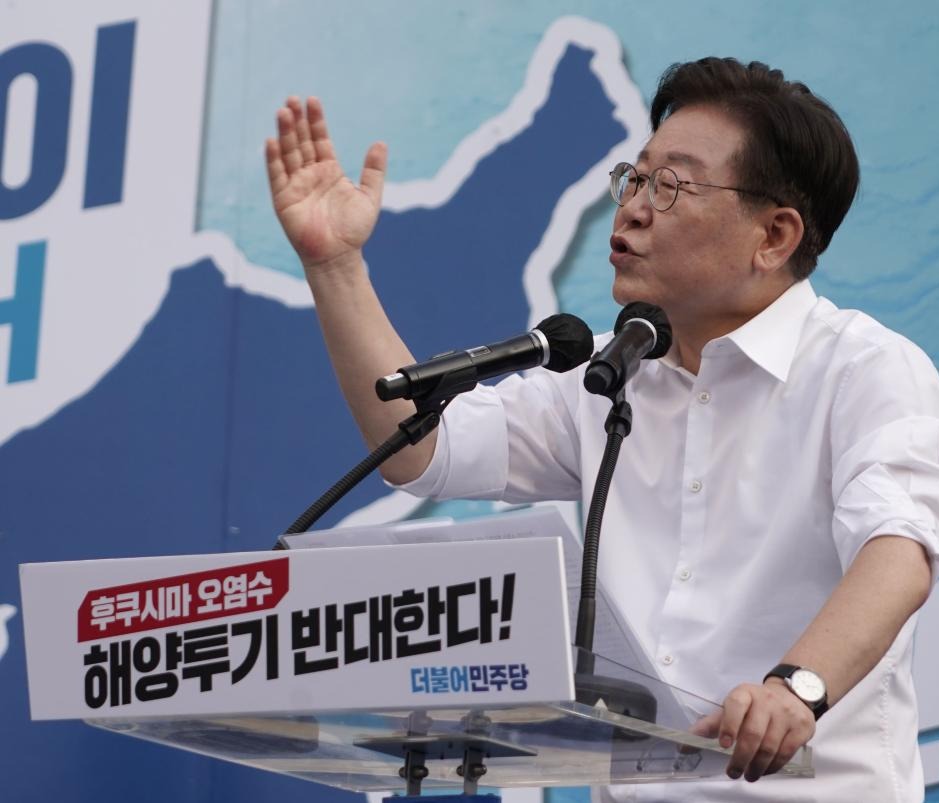
A court in South Korea on Wednesday overturned a lower court’s decision, ruling that the main opposition party leader is not guilty of violating election law. If this decision is upheld, it will pave the way for him to run in the next presidential election.
Prosecutors can appeal the decision, which could take the case to the Supreme Court, South Korea’s highest judicial body.
Speaking outside the court after the ruling was announced, Lee Jae-myung thanked the court for the decision, which he described as “the right decision.”
The charges against Lee stem from remarks he made in 2021 while competing in his party’s presidential primary, where he allegedly denied knowing one of the key figures in a real estate development scandal. The scandal involved a redevelopment project in Seongnam city, where Lee was mayor. Prosecutors allege Lee lied about his relationship with businessman Kim Moon-ki to conceal his own culpability in the real estate deal.
Immediately after the court’s decision was announced, Kweon Seong-dong, leader of the ruling People Power Party, called the ruling “regrettable” and urged the Supreme Court to quickly decide the case.
Lee, a trained lawyer and experienced politician, lost the 2022 presidential election by the narrowest margin in South Korea’s democratic history to now-impeached President Yoon Suk Yeol.
Yoon, Lee’s fierce rival, is awaiting a Constitutional Court ruling on his impeachment over charges of leading an insurrection in December. Lawmakers voted to impeach Yoon following his attempt to declare martial law in early December, which he claimed was necessary to protect South Korea from opposition “anti-state forces.” The measure was quickly rejected in the National Assembly, but the attempt triggered a political crisis that continues months later.
The Constitutional Court completed hearings on Yoon’s case late last month and is expected to deliver its verdict within days, although no official date has been announced. If the court finds Yoon not guilty, he will be immediately reinstated. If found guilty, an early election will be held within 60 days.
Data released last week by polling firm Gallup Korea showed Lee as the leading choice among potential candidates for the next presidential election. Lee, with a support rate of 36%, was far ahead of the number 2 likely candidate, conservative Labor Minister Kim Moon-soo.
Yoon’s impeachment delay: Legal rigour or political deadlock?
-
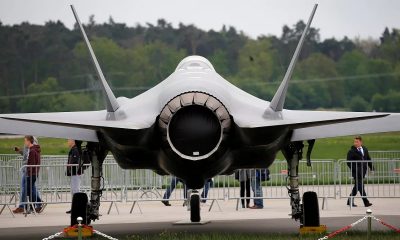
 EUROPE5 days ago
EUROPE5 days agoF-35 debate intensifies across Germany and Europe
-
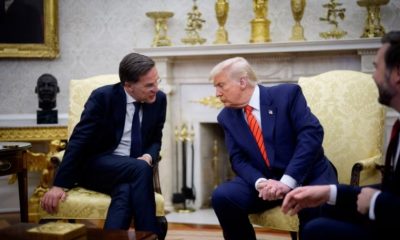
 EUROPE1 week ago
EUROPE1 week agoEurope plans for US absence in NATO with 5-10 year strategy
-

 ASIA2 weeks ago
ASIA2 weeks agoChina’s AsiaInfo expands with DeepSeek-powered AI
-
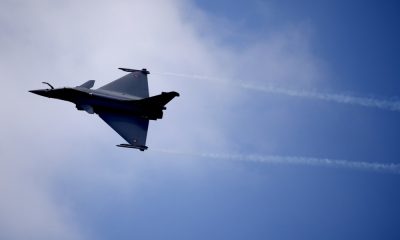
 EUROPE2 weeks ago
EUROPE2 weeks agoFrench defense industry gears up for war amid EU strategic autonomy push
-

 AMERICA2 weeks ago
AMERICA2 weeks agoTrump’s tariffs drive Nvidia to invest heavily in US manufacturing
-
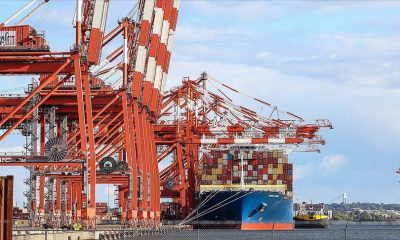
 DIPLOMACY6 days ago
DIPLOMACY6 days agoTrump’s proposed fees on Chinese ships threaten US maritime industry
-

 DIPLOMACY2 weeks ago
DIPLOMACY2 weeks agoUS, Britain, and Türkiye excluded from EU armament fund
-

 ASIA1 week ago
ASIA1 week agoIndia shelves $23 billion plan to rival China’s factories


















